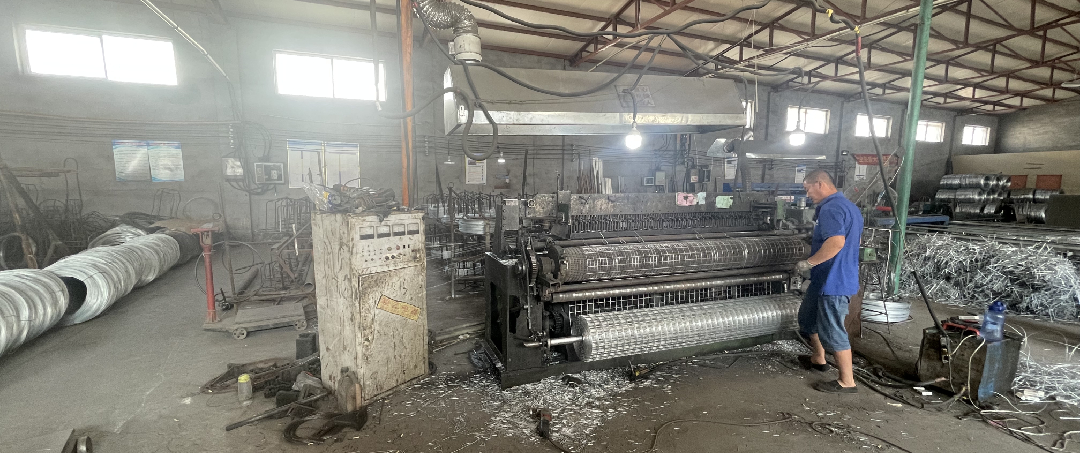Cost Analysis of Barbed Wire Fencing for Your Property Needs
Understanding the Cost of Barbed Wire Fencing
Barbed wire fencing is a popular choice for property delineation, security, and livestock management. Its effectiveness, durability, and comparatively low cost have made it a favorite for farmers, ranchers, and security-conscious property owners. However, the costs associated with barbed wire fencing can vary widely based on several factors. Whether you're considering installing a new fence or replacing an existing one, understanding these costs is essential for planning your budget effectively.
Material Costs
The primary expense in barbed wire fencing is the material itself. Barbed wire typically comes in various grades, with heavier wire providing more strength and durability. On average, standard barbed wire costs between $0.10 and $0.50 per linear foot, depending on the gauge and quality. In addition to the wire, you will also need to consider the costs of fence posts, barbed wire staples, and perhaps a barbed wire tensioning tool.
Wooden posts are commonly used and can range from $2 to $10 each, depending on the type of wood and height. Metal posts, which are often more durable and resistant to rot, can cost anywhere from $1.50 to $5 each. For a rough estimate, if you plan to put up a mile of fencing, you might expect to spend on average around $3,000 to $5,000 for quality materials alone.
Labor Costs
If you're hiring professionals to install the fence, labor costs will significantly influence your overall expenditure. Labor rates vary widely by region, but you can generally expect to pay anywhere from $30 to $70 per hour for skilled labor. A standard installation for a mile of barbed wire fencing might take 30 to 50 hours, depending on the terrain, weather conditions, and the experience of the workers.
If you're handy with tools and have the time, considering a DIY approach can save you a significant amount in labor costs. However, it’s important to understand that improper installation can lead to structural issues down the road, potentially undermining the fence's effectiveness.
barbed wire fencing cost

Terrain and Installation Conditions
The terrain where the fence will be installed can also impact costs. Rocky or uneven ground may require additional time and effort to install fencing correctly, resulting in higher labor costs. Additionally, if your property requires clearing land or removing obstacles, such as trees or old fencing, this can pose additional expenses. Projects on flat, easily accessible land will be more straightforward and affordable compared to complex installations in rugged terrain.
Additional Considerations
While barbed wire fencing can be an economical choice, it’s essential to consider long-term maintenance and potential upgrades. Barbed wire fences, although durable, may require maintenance over the years, including tightening loose wires and replacing damaged sections. Wildlife and livestock can also pose challenges, potentially damaging the fence.
Moreover, depending on your location, you may need to check local zoning laws and regulations pertaining to fencing. Certain areas have specific requirements regarding fencing height, type, and necessary permits, which can add to your overall costs.
Conclusion
The cost of barbed wire fencing can vary significantly depending on materials, labor, terrain, and additional considerations. By thoroughly assessing these factors, you can develop a better understanding of the overall expenses involved. Whether you opt for a DIY project or hire professionals, investing the time to plan will ensure that your barbed wire fence serves its purpose effectively while staying within your budget. Ultimately, a well-constructed barbed wire fence can offer both security and value for years to come.
-
Space-Saving Chain Fence Hacks Vertical Gardening with Cyclone MeshNewsJul.16,2025
-
Innovations in Iron Nail Wire Production for Modern ConstructionNewsJul.16,2025
-
Creative Uses of Wire Netting Fence in Modern Landscape DesignNewsJul.16,2025
-
Barbed Wire Fence Innovations in Anti-Climb TechnologyNewsJul.16,2025
-
Architectural Uses of Umbrella Nails for Aesthetic Roof DesignsNewsJul.16,2025
-
Architectural Uses of Razor Barbed Wire in Secure Urban DesignNewsJul.16,2025




